Curious to find out how your employees feel about working in your company, but don’t know where to start? We have a few tips to help you create a system that’ll let you track employee experience from onboarding to offboarding.
Want to know how to retain your best employees and create a reputation that will attract more talent? Stick around to find out!

In this article:
What is the employee experience?
Employee experience (EX) is the subjective feeling each employee has about the company from recruitment to the exit interview.
While EX will most likely never be 100% positive or negative, it’s important to keep it on the positive side to retain the good employees and maintain the ability to acquire new talent.
We’ve reached out to Isidora Mirosavljevic — HR Generalist at CAKE.com — for her input on the subject. Here’s her definition of employee experience:

“Employee experience encapsulates everything the employee sees, feels, and thinks from their very first interaction with the company, through the hiring process, during their time with the company, and up until their departure.”
Keep in mind that there’s a clear difference between employee experience and employee engagement:
- EX is the entirety of an employee’s experience at a company.
- Employee engagement is how committed the employee is to their job and the company.
The 2 terms are closely tied as one of the main goals of any employee experience strategy is to improve engagement.
Why is employee experience important?
Employee experience is important because the way employees feel about their workplace directly affects the success and health of a business.
We talked to Milica Bojčić, Employee Experience Specialist at CAKE.com, to hear why she thinks employee experience is important:

“Employee experience is essential because it directly shapes employees’ motivation, engagement, and sense of belonging. From a psychological perspective, everyone wants to feel valued, to find purpose in their work, and to have their voice heard — that is exactly what a well-designed employee experience provides. When people feel supported and heard, their intrinsic motivation grows, along with their willingness to give their best.”
In particular, the most important areas EX affects are:
- Productivity — A satisfied employee who has had a positive experience working at your company will be more engaged and put more effort into excelling at their role. This leads to increased customer and client satisfaction as employees will go out of their way to help customers make a good choice.
- Employee retention — A positive experience drives employees to stay in the company longer, which is important because losing a valued team member is never good for morale. Also, onboarding new employees can take time and money, which reduces productivity in the period following recruitment and ultimately affects your bottom line.
- Talent acquisition — Employees with a positive experience are far more likely to recommend your company to the people they know. This bodes well for you, as referrals are more profitable on virtually every front — from base recruitment costs to long-term retention and profitability.

What are the 7 stages of the employee life cycle?
Usually, the employee will go through 7 stages of the employee life cycle in every company:
- Attraction,
- Recruitment,
- Onboarding,
- Development,
- Retention,
- Offboarding, and
- Advocacy.
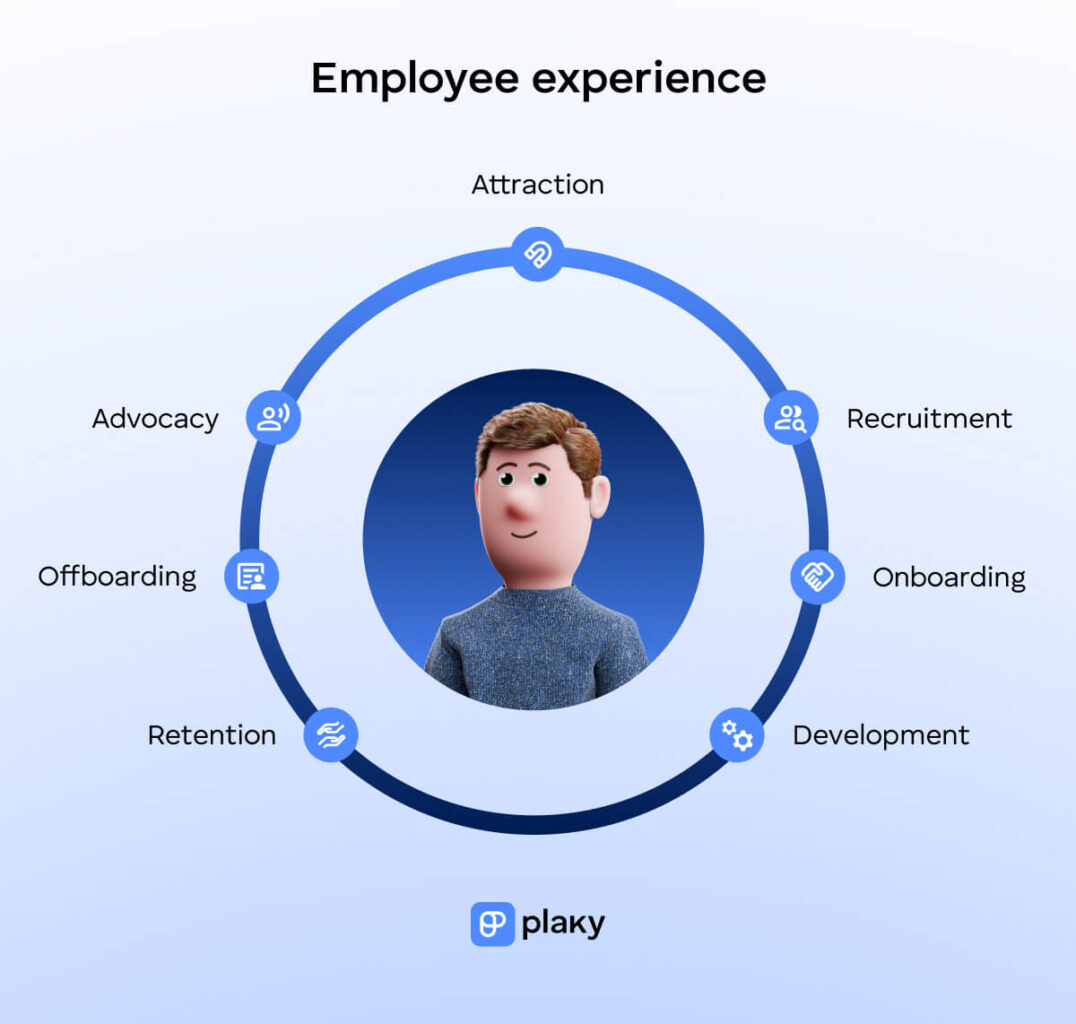
#1 Attraction
Attraction is the first stage of the employee life cycle, but it’s also the result of the cycle’s last stage: advocacy. A company’s reputation is what attracts top talent and qualified staff.
That’s precisely what Riva Marion Dejan — Senior IT Recruiter at CAKE.com — told us:

“Top candidates often decide whether to apply based on how authentic a company’s reputation feels. That’s why showcasing culture and values upfront is just as important as listing the job requirements.”
Since former employees inevitably spread word about their experience in a company, that’s what most candidates will consider when checking out a potential workplace.
Here’s what Arijana Fišić, Employee Experience Specialist at CAKE.com, had to say about making sure former employees leave on a good note:

“When we part ways with a colleague, we strive to make the process as smooth as possible for both sides. The goal is to separate on the best possible terms, to hear their feedback, and to talk through their overall experience — what was good and what could be better.”
#2 Recruitment
The recruitment process typically involves:
- Advertising available positions,
- Identifying suitable candidates,
- Testing the selected candidate’s skills, and
- Making the final decision on who to hire.
In this stage, the company is making its first impression on the candidate, so it’s crucial to create a good image. Therefore, replying in a timely manner and not leaving candidates confused is paramount.
Riva shared with us her experience in the recruiting process:

“As a recruiter, I’ve seen how even small details in the hiring process — such as timely updates, clear communication, and respectful feedback — shape a candidate’s perception of the company. Recruitment is not just about filling a role; it’s about setting the tone for the entire employee experience.”
#3 Onboarding
Once a candidate accepts the job offer, the onboarding process begins. This is the initial period where the employee gets accustomed to their new position and the company in general.
During this stage, the new hire should:
- Be trained,
- Learn about the company’s culture, and
- Integrate into the team.
An acclimation period sets a solid foundation for long-term employee retention, and it should last no fewer than 2 to 3 months.
We got a first-hand example of how to approach onboarding from Milica:

“First days matter the most as onboarding helps every new hire feel truly welcome, know where to find the right information, and feel comfortable asking questions. At our company, we combine operational onboarding, social onboarding, and professional onboarding. This mix helps people settle in faster and start contributing with confidence.”
Arijana added even more details:

“To make this start as stress-free as possible, it’s important to have a structured plan in place. Providing a new employee with a roadmap of the onboarding program lets them know exactly what to expect in their first few weeks and their main points of contact from day 1. This creates a sense of security and reduces the fear that comes with the unknown.”
#4 Development
A new employee should get accustomed to the company, their team, and their role within a few months. But that’s not where their journey should hit pause.
The company should provide room and opportunity for their further development. This includes:
- Organizing workshops,
- Providing additional training, and
- Supplying resources for knowledge expansion.
Milica shared details about how important the manager’s role is in the development of each team member:

“During the onboarding process and later on, we empower our colleagues to talk openly with their managers. After all, the manager is their primary guide for professional growth. They are the person employees can share aspirations with, what they’d like to focus on more, which tasks they find engaging, and which are less interesting. We help managers create development plans for their team members and provide support when necessary.”
#5 Retention
Keeping people for the long haul is the longest and most complex part of any employee experience strategy. Here’s what Isidora had to say about it:

“An EX strategy should be built on the company’s values, as they permeate every layer of the company structure. From informal interactions in the office and the style and tone of communication to the approach to flexibility and set rules, etc. An EX strategy should collect feedback from employees through a variety of channels and integrate the data with the company’s values.”
Data collection is a major part of this stage. Depending on the size of the team and the company, it can be collected through:
- Employee experience surveys,
- 1-on-1 meetings,
- Team meetings, or
- Relevant KPIs.
This data will then indicate weak points in your current strategy, allowing you to take steps to improve it and keep your employees engaged and motivated.

#6 Offboarding
It’s not very likely employees will spend their entire worklife expectancy in one company. Sooner or later, they’ll leave for any number of reasons — a better offer elsewhere, career switch, advancing to positions that are not open at your company, etc.
Offboarding is all about conducting a proper exit interview and an exit survey. This way, the employer will:
- Gather feedback,
- Consider how the employee’s departure will affect the organization, and
- Ensure that the employee leaves with a positive image of the company.
Milica highlighted the importance of smooth offboarding:

“Onboarding sets the tone for a great beginning, but offboarding is just as important because it reflects the true culture of the company. Even though saying goodbye is not always easy, we value getting feedback from those who are leaving. We can learn from their experience, specifically what worked well and if there’s room for improvement.”
#7 Advocacy
The final stage is about transforming a former employee into a spokesperson for your company. This is why the last impression can be as important as the first.
Advocacy is closely linked to the first stage — attraction of new employees. Those who have personal experience working in a company are the best witnesses and reviewers of what it’s like to work in a certain company.
Here’s how Milica explains the link between offboarding, advocacy, and attracting new employees:

“The way we part ways with employees speaks just as loudly about our culture as the way we welcome them. A well-executed offboarding process builds trust, protects the company’s reputation, and leaves room for departing employees to remain advocates for the organization. By taking the time to gather feedback and ensure a positive experience, we honor their contribution and strengthen the foundation for future collaboration and continuous improvement.”
Positive employee experience challenges
Now that we have explained what a positive employee experience is and its key stages, let’s take a look at the biggest challenges you’ll face when developing your strategy.
- Optimizing processes and systems — This entails adapting your workflow and work environment to improve the employee experience. Sometimes, what’s beneficial for employee experience might not be beneficial for the overall performance.
- Establishing a good work-life balance — A recent study showed that 83% of 25- to 34-year-olds have experienced burnout at their jobs. Employees may be required to stick to rigid schedules, work overtime, work weekends, or invest time in work-related activities that don’t normally fall under their official responsibilities.
- Improving the onboarding process — Smaller companies may need new hires to get up to speed as quickly as possible to keep things going smoothly, while larger and growing companies might not have the resources to provide proper onboarding for each new employee.
- Collecting data regularly — The more employees you have, the harder and more time-consuming it is to collect and analyze quality data. Implementing changes based on said data can also be quite resource-intensive.
- Building and maintaining trust — Trust is difficult to gain but easy to lose. You could devote a lot of time and resources to earn an employee’s trust, and it would take relatively little to significantly undermine it.
According to Isidora Mirosavljevic, establishing trust might be the biggest challenge you’ll encounter:

“The greatest challenge in developing a positive employee experience is earning the employee’s trust and maintaining that trust as time goes on. This is in large part due to the widespread view that ‘HR works for the company, not the employees.’ Because of this, many people may distrust HR personnel and view their efforts with skepticism.”
How to implement a solid employee experience strategy in 4 steps
If you’re wondering how you can start implementing an employee experience strategy at your company, here are the main steps you need to take.
#1 Define goals and objectives
The first step in creating an employee experience strategy is to define the main goals and objectives you want to achieve.
Some broad targets may look like this:
- Optimize the onboarding process.
- Lower employee turnover.
- Increase positive employee experience.
- Improve employee work-life balance.
Once you’ve identified what’s important for your company, you can present these conclusions to top management and create a detailed plan with a defined budget.
#2 Hire dedicated personnel
If you plan on making employee experience an important part of your success strategy, the first step should be to put someone qualified in charge.
This might be an HR generalist, a specialist employee experience manager, or even a team of HR professionals. The specific roles and the number of people you need to hire depends on the goals you set, the budget, and the company size.
#3 Collect employee feedback
Surveys are excellent for collecting data about key factors on a company level, but 1-on-1 interviews are essential for providing a personalized experience for each employee. If you wish to collect quality data efficiently, you should use both.
Once you have the relevant data, use it to:
- Analyze your current situation,
- Isolate the main issues, and
- Take specific steps to address them.
Don’t know where to start? Make use of our free employee experience survey template!
Get our employee experience survey template
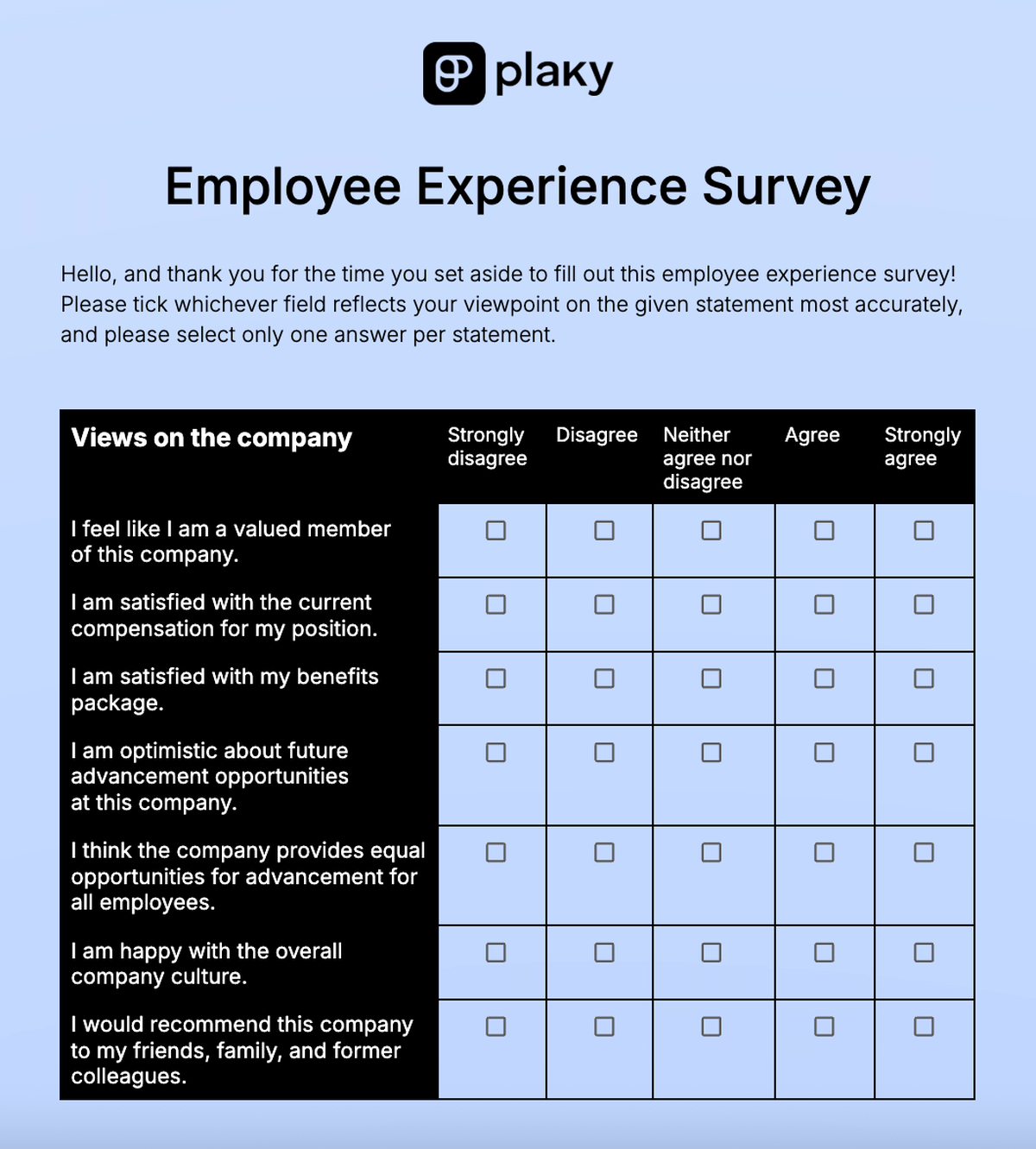
#4 Monitor changes and adapt
You have to monitor your employee experience strategy as time goes by. So, the next step in the process is to determine a set of KPIs relevant to your strategy that will help you:
- Identify beneficial factors and activities,
- Find new weak points,
- Improve existing strategies, and
- Devise new ones.
It’s important to continue collecting information from employees, both through surveys and interviews.
Here’s what Isidora told us when we asked her for a pro tip on developing a successful strategy:

“It’s extremely important to pay full attention to every stage of employee experience. Since EX is a chain consisting of multiple links, even one weak link will affect an employee’s overall experience. A positive EX is based on trust and feedback, so you should always look for new ways to improve your strategy and make a positive contribution to your employees’ professional journey.”
Positive employee experience examples
There are some small changes you can introduce in your company that could have a rather positive impact on employee experience. Here are some examples:
- Acknowledgement — By acknowledging an employee’s work and effort privately, publicly, or during team meetings, managers can contribute a lot to integrating a new member into a team at no real cost.
- Work independence — By shifting the focus from time invested to results achieved, managers can develop a culture of personal accountability in their team.
- Flexible work hours — Many positions that don’t involve interacting with clients or physical presence with colleagues can be awarded a great degree of flexibility as long as the deadlines are met. Ultimately, this can provide an employee with a better work-life balance. Better yet, it shows them their employer trusts them to handle their work responsibly, without unnecessary restrictions or micromanagement.
- Weekly check-in meetings — HR can get a first-hand insight into how new employees are taking to their positions, how well they’re integrating into their teams, and what their overall experience looks like over the course of the onboarding process.
💡 Plaky Pro Tip
Instead of micromanaging your employees, have regular performance reviews to assess what they should work on. Here are some free performance review templates to help you out:
5 employee experience platforms
We’ve compiled a list of helpful tools you can use to plan, organize, and implement your employee experience strategy.
#1 Plaky — best for work & project management
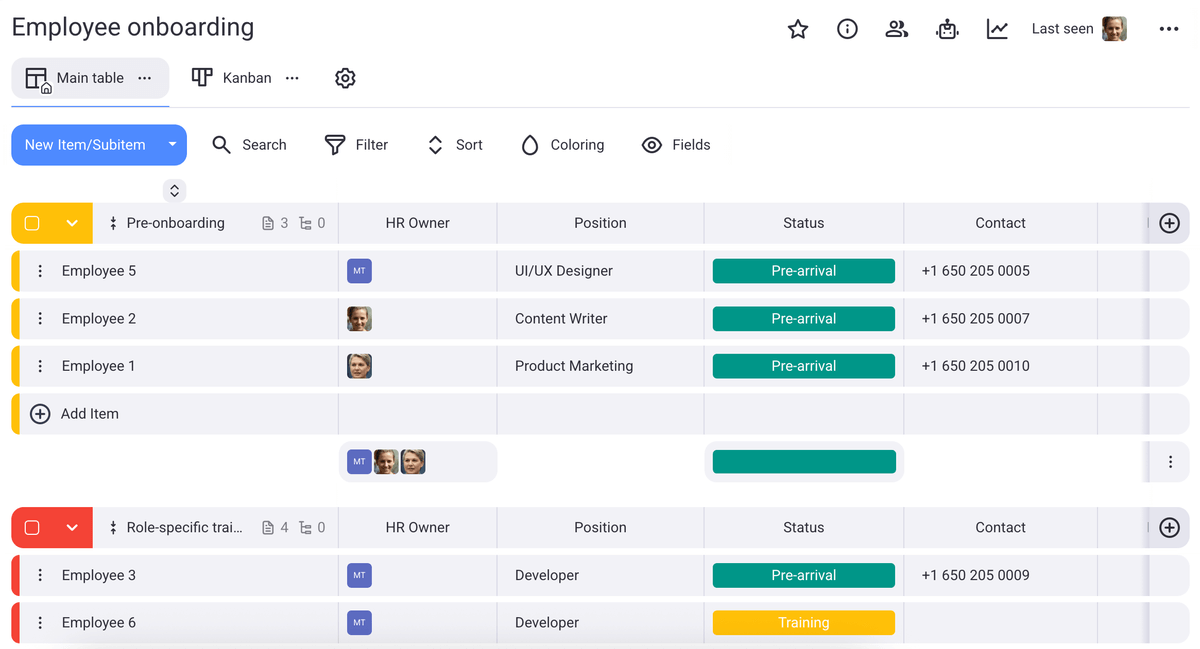
Plaky is a convenient and powerful tool that’s well suited for skilled employee experience specialists.
Those who have been in this profession for a while know that you can easily confuse names and forget the details of individual journeys.
But with Plaky, you can:
- Create unlimited boards — Each can serve a different purpose; for example, you could dedicate one board to the onboarding process and others to managing projects.
- Sort employee files through items — Dedicate an item to each employee so that you can easily check their journey and experience since the moment they joined the company.
- Share files — Centralize your paperwork by attaching documents relevant to an employee to the item dedicated to them.
- Automate processes — Let the app work for you by instructing it to perform certain actions instead of doing them manually.
Plaky is also great for those who are still learning about HR project management as you’ll find several useful templates to help you get started, including:
Essentially, you can customize your boards and use Plaky to onboard newcomers, improve employee experience on every level, and manage all HR projects.
💡 Plaky Pro Tip
Looking for the best way to manage your small business? Check out our selection of PM tools:
#2 Google Forms — best for employee surveys
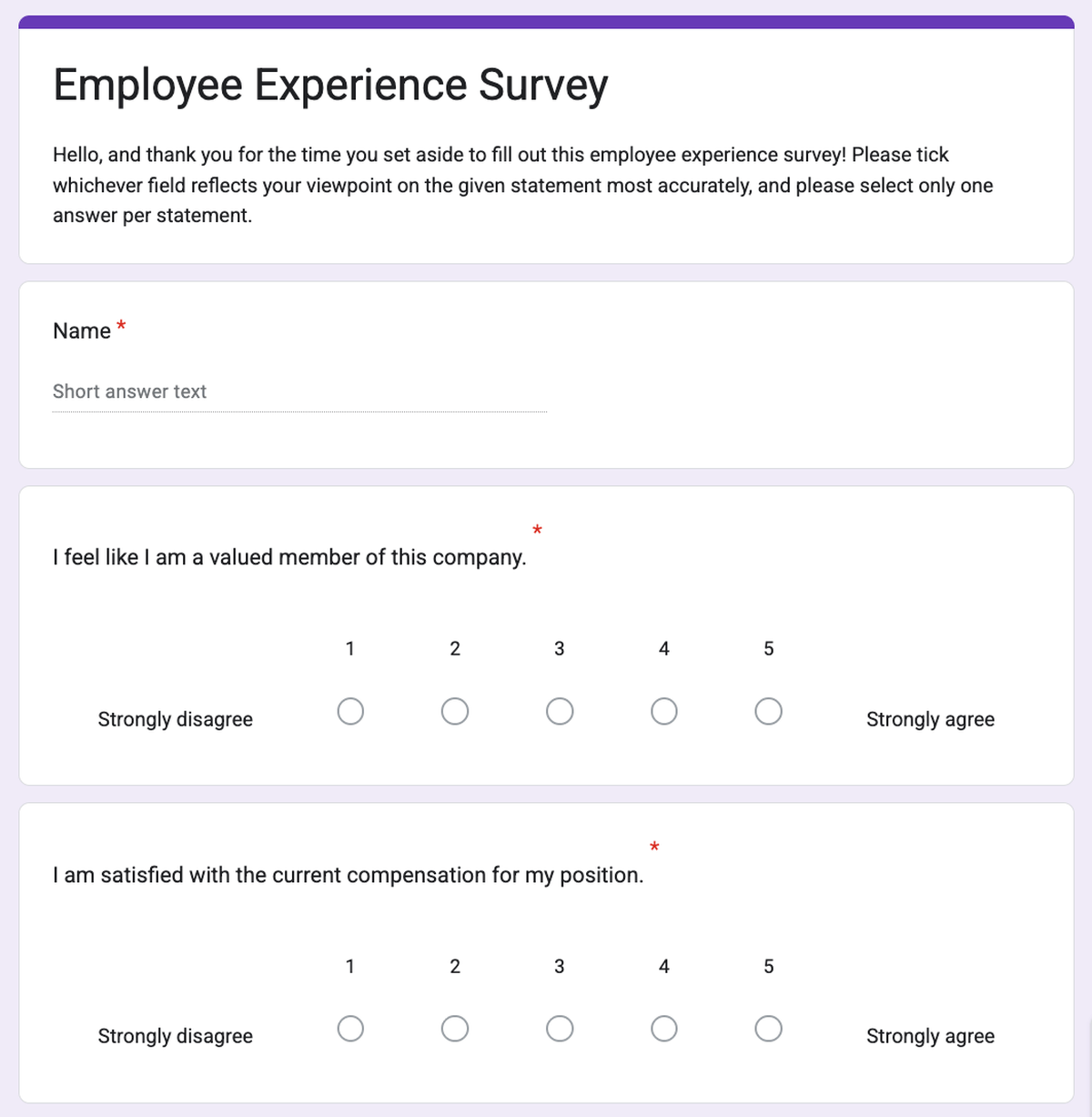
Google Forms is a simple and robust free app that anyone can use to conduct surveys quickly and easily in organizations of any size.
It has all the core features you’d expect to find in a survey tool, such as:
- High customizability,
- Multiple question types,
- Streamlined anonymous data collection,
- Convenient data analysis system, and
- Many useful templates.
The Google ecosystem is highly integrated, so all the responses will automatically populate a sheet, saving you plenty of time and eliminating some of the tedious manual work.
#3 Clockify — best for time tracking
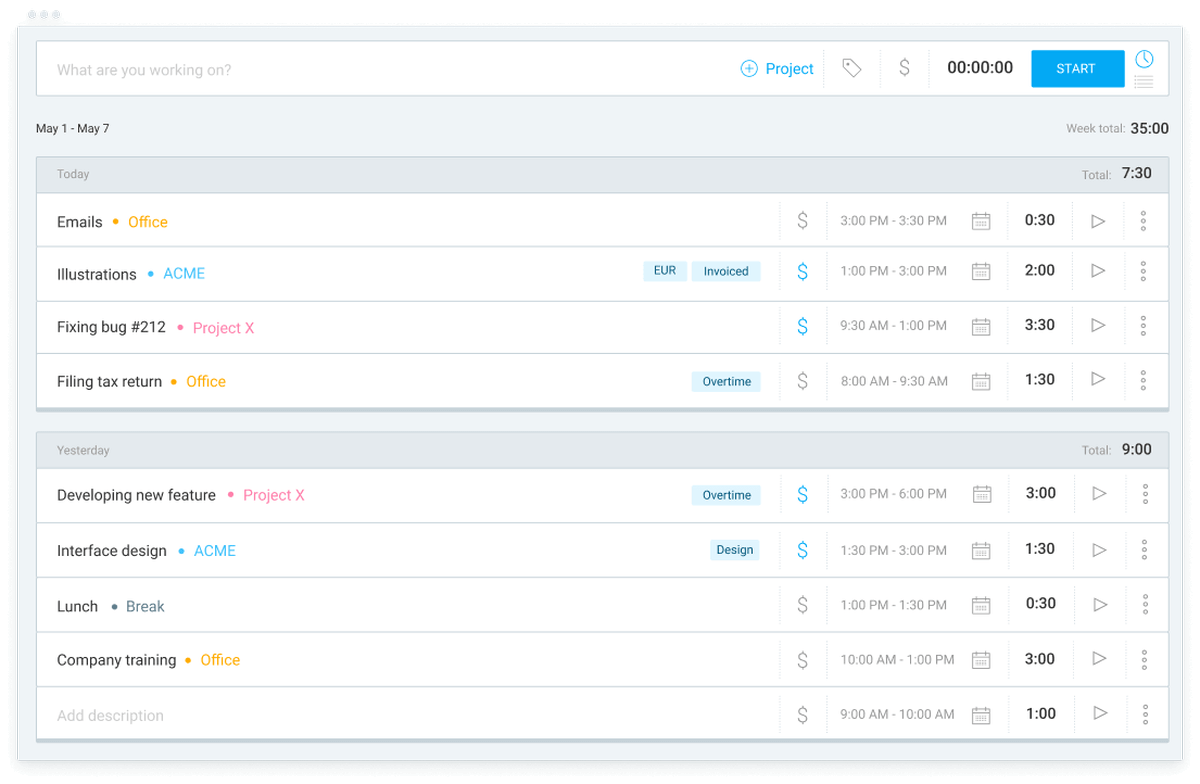
Clockify is a powerful time-tracking tool that offers a number of useful features, including a stopwatch and detailed time reports. These features are especially important for companies that involve remote work or independent contractors.
For HR, the most relevant Clockify features are:
- Editing and reviewing timesheets — Track attendance without complicated sheets.
- Time off management — Centralize PTO management and streamline the approval process.
- Pumble integration — Manage your team’s time off on the go.
- Several types of exportable reports — Automate work and reduce the time spent on creating reports.
Create your own Clockify add-ons
#4 Pumble — best for communication
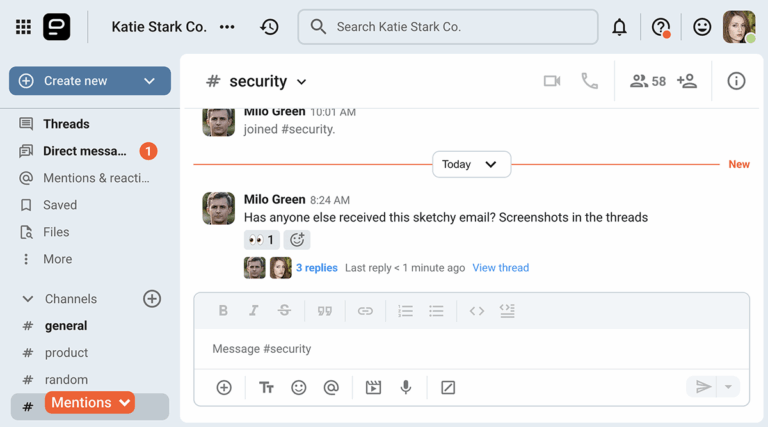
Pumble is a team chat app that has all the features you need for hassle-free communication — public and private channels, direct messaging, and video calls — in teams of any size.
Communication is key to a good employee experience, and it’s more important than ever to choose the right app. Pumble lets you:
- Organize channels into groups — Place the most important conversations at the top so that they’re always within reach.
- Communicate through threads to prevent channel clutter — Don’t let a stream of messages flood your chats.
- Save important messages and announcements — Pin the most important information so that it doesn’t get lost.
- Schedule messages — If you think of something outside of work hours and don’t want to bother your colleagues, you can schedule a message for the next day.
- Share files, voice, and video messages — You don’t have to limit yourself to certain formats when messaging coworkers.
- Organize group calls and video conferences — When messages are not enough, you can call one or more colleagues, even via video.

#5 BambooHR — best for tracking employee satisfaction
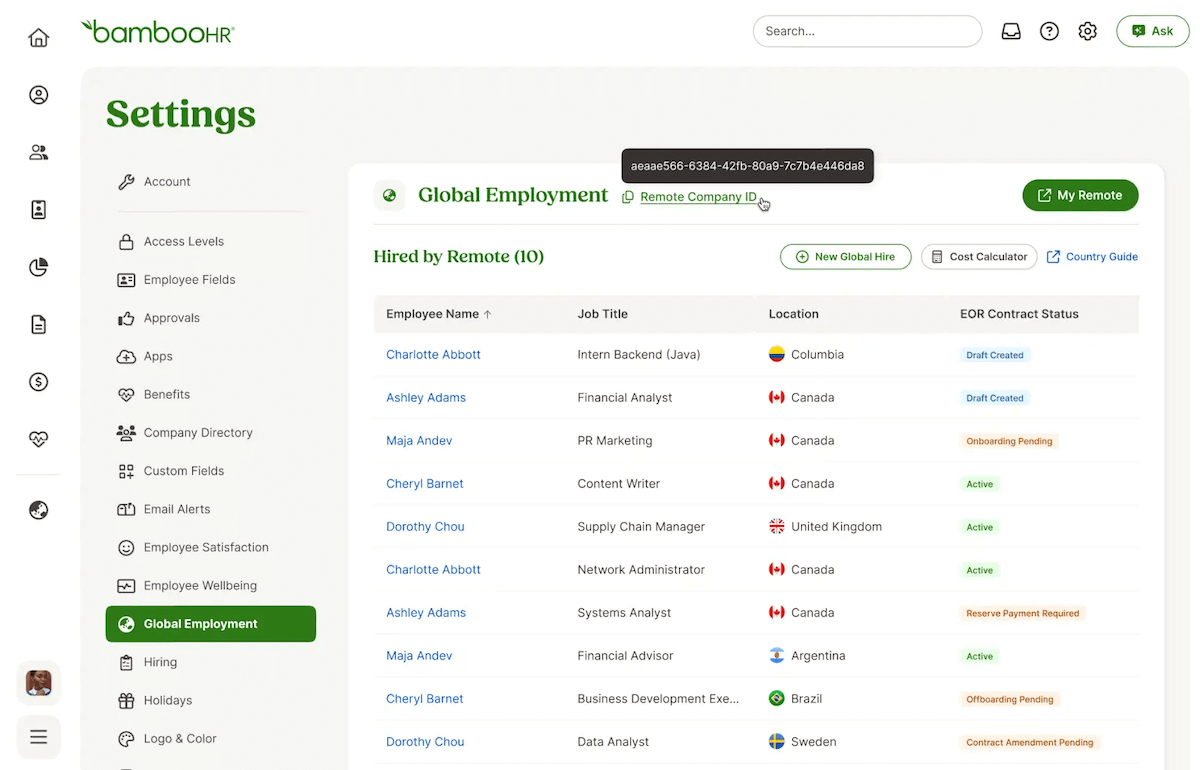
As a popular and versatile tool, BambooHR excels particularly when it comes to tracking employee satisfaction.
It has a number of useful features for HR management, including:
- Gathering information,
- Keeping records,
- Managing payroll,
- Managing time off,
- Onboarding,
- Offboarding, and more.
The most notable feature in BambooHR is its employee satisfaction survey. You can collect input from employees with complete anonymity, followed by detailed analytics that will allow you to easily identify weak points and improve your strategy.
💡 Plaky Pro Tip
Want to explore more alternatives? Check out our selection of the best HR software out there:
Best practices for a positive employee experience
Establishing a positive employee experience across the board is a challenge, but it’s not impossible.
To sum up, here are 5 best practices and tips that should provide a solid foundation for a positive employee experience:
- Stay industry-updated — Maintain awareness of the culture and conditions offered by other businesses in your industry so that your employees don’t look elsewhere for better work conditions.
- Know your employees — Get to know your employees, both as individuals and as professionals. This way, you’ll know what’s important to them and which non-financial perks will keep them in the company.
- Educate team leaders and managers — Managers or team leaders should be more than just the first upper link in the chain of command. They should be teachers and mentors with a large role to play in establishing team culture and building an atmosphere of trust for new employees in their respective teams.
- Implement remote or hybrid work — Many businesses find that investing in virtual project management techniques and implementing remote or hybrid work reflects positively on employee experience.
- Keep employee well-being in mind — Ensure teams are adequately staffed to minimize stress and overtime, plan out stable schedules and work hours, and maintain communication with employees about their job satisfaction.
Manage your workflows with Plaky
If you need a scalable and affordable tool to manage your company from the ground up, Plaky is just what you’re looking for.
Every department can organize and manage their workflows easily as the interface is so user-friendly that even absolute beginners can use the app. And once every team is on board, collaborating and managing the entire company becomes surprisingly simple!
You can start off with the free plan and upgrade to one of the fair-priced plans once your company’s needs grow.
No matter the plan you choose or the question you might have, our living and breathing support team is available 24/7.
Ready to improve the employee experience in your organization? Sign up for a free 14-day Plaky trial today!
